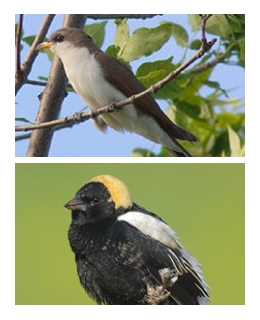Biology
 Avian
Avian
- Avian-Habitat Relationships (2014).
The main goal of this review and assessment is to identify how bird survey data collected along the Yellowstone River can best be used to inform future Yellowstone River Conservation District Council Cumulative Effects analyses. These analyses focus on describing the potential impacts of land use management along the Yellowstone River on avian communities.
- Factors Influencing Riparian Breeding Communities along the Middle and Lower Yellowstone River (2009)
This investigates factors influencing community and the distribution and abundance of breeding birds along a 450-mile segment of the Yellowstone river in central and eastern Montana. The download includes a GIS data file with bird survey locations.
- Avian Communities of the Middle and Lower Yellowstone River: A Pilot Study (2006)
This provides basic information about the distribution of bird species and riparian habitats, as well as crucial information about the logistics associated with conducting bird surveys along the river. The download includes a GIS data file with bird survey locations.
Biological Resources
Fisheries
- Habitat Data for 1950 and 2001
- Anthropogenic Habitat Change Effects On Fish Assemblages Of The Middle and Lower Yellowstone River (2014)
- Integration and Interpretation of Recent Yellowstone River Fish Research (2014)
Invasive Species
- Russian Olive/Saltcedar Long-Term Management Strategy (2013)
- Russian Olive Data Analysis (2013)
This is an analysis of the 2011 Russian Olive Inventory data. - Russian Olive Mapping Report (NRCS, 2011)
- Russian Olive Inventory GIS data (NRCS, 2011)
This shows the distribution and extent of Russian Olive along the Yellowstone River main stem and major tributaries based on 2009 National Agricultural Imagery Program (NAIP) photos. It includes approximately 500,000 individually attributed polygons - Russian Olive Literature Review (2006)
- Invasive Plant Information Summary (2005)
This report contains photos of and biologic information about invasive plants of the region and maps showing distribution of invasive plants from available databases and surveys.
Riparian
- Riparian Vegetation Mapping report (2008) and data (1950, 1976, and 2001). This report and the associated GIS data focuses on mapping changes in the historic extent of major riparian vegetation classes in the Yellowstone corridor, as identified from aerial photography.
- Historical Retrospective (2003)
This report presents the results of an investigation of pre-settlement conditions of the hydrology, water quality, fluvial geomorphology, vegetation, wildlife, and fisheries of the river. A catalogue of collected historical information is included as a spreadsheet. The report is accompanied by a collection of 76 historic photographs. - Historic Documents Preliminary Evaluation (2006)
This evaluates the vegetation information potential of documents mentioned in the Historical Retrospective (above) but not examined for that report.
Water Quality
-
Yellowstone River Pipeline Risk Assessment and Floodplain Reclamation Planning Project (2012).
This report, along with the accompanying addendum, documents the results of an investigation into the potential for fluvial geomorphic processes (natural erosion) to affect petroleum pipelines within the Yellowstone River Channel Migration Zone. The addendum clarifies and revises the risk assessment ratings presented in the original report based on supplemental information provided by the U.S. Department of Transportation Pipeline and Hazardous Material Safety Administration (PHMSA) and pipeline operators subsequent to final delivery of the report.
Wetlands
Yellowstone Clearinghouse Home
Yellowstone River Final Reports
- Cumulative Effects Analysis (CEA)
- CEA Technical Appendices
- CEA Executive Summary
- Reach Narratives
- Recommended Practices and Position Statements
- Governor's Upper Yellowstone Task Force (1997-2003)
Maps
- Online Map Viewer
- Reach Story Map 1: Overview
- Reach Story Map 2: Details
- Yellowstone Reference Maps
- Maps Selected from Technical Reports
Data and Technical Reports
- Imagery and Topographic Mapping
- Hydrology and Hydraulics
- Land Use and Physical Features
- Geomorphology
- Biology
- Socioeconomics
- List of Available GIS Data
Contact Info
